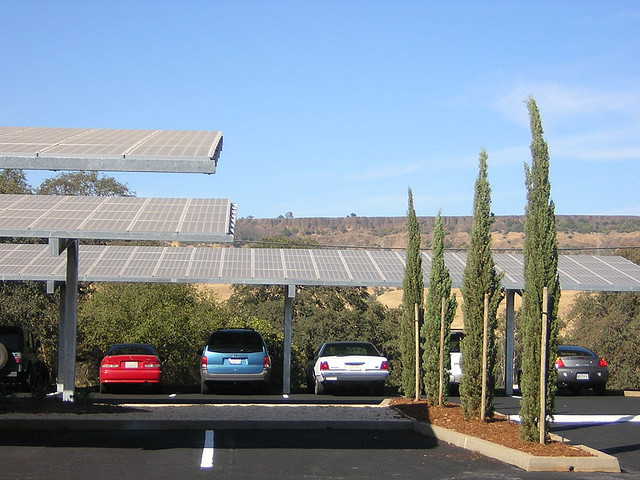If you haven’t heard yet, there’s a “rule” that precludes distributed renewable energy projects from supplying more than 15% of the power to most “distribution circuits” (part of the low-voltage electric grid that brings power into homes and businesses). With the rapidly falling cost of solar power, many places in the country are starting to push up against this limit.
So there’s good news recently in California, where the state’s investor-owned utilities agreed to raise this somewhat arbitrary limit and accept more distributed generation.
The process of setting the rule is almost comical, although the rationale isn’t. Utilities want to be sure that during a power failure (from the grid), local distributed generators can’t accidentally power the local grid enough to zap repair crews who would expect the lines they’re repairing to be dead. Good idea.
But the margin for safety was rather ridiculous. Let’s assume a given portion of the grid needs 100 megawatts of power at maximum. Utilities looked for the typical “daytime minimum” (e.g. the least power used during daylight hours) and found that is was about 30% of that peak; in this case, 30 megawatts (probably around 6 AM). Then they divided by two: 15 megawatts or a 15% rule.
But this “rule” has two major problems:
- Distributed solar produces its peak power at noon, when there is far more demand on the system than at 6 AM. So limiting a circuit to 15 MW of solar capacity because that’s half the daytime minimum vastly overestimates the amount of solar that will be on the system relative to demand. In fact, minimum demand at noon is generally around 50% of the peak, not 30%.
- Advanced electronics and inverters enable a solar array to shut off in the event of “islanding” (when the utility grid fails), minimizing the chance of accidental shock.
The Clean Coalition and its partners in California successfully fought the utilities on this issue. Here’s a short summary from their newsletter:
The proposed settlement would Fast Track interconnection of DG projects up to 100% of coincidental minimum load, and this new standard will result in as much as a threefold increase in the level of DG penetration allowed in Fast Track. Under the previous arbitrary 15% peak load limit, DG projects only generating 30-50% of coincidental minimum load were eligible for Fast Track. The CPUC is expected to approve the settlement by mid-summer [2012].
Well done!




